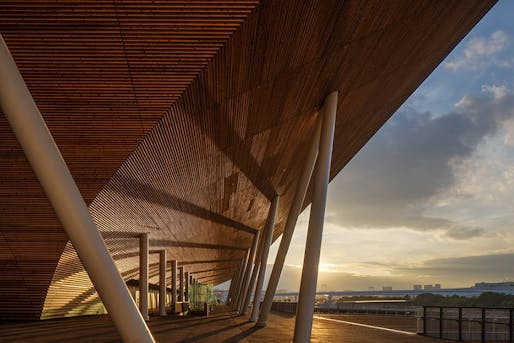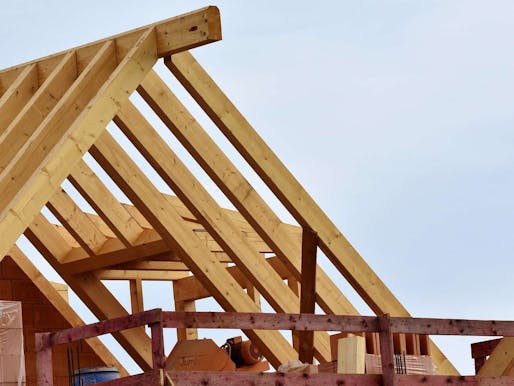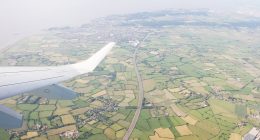Lumber prices have seen dramatic rises and falls during the COVID-19 pandemic. In May 2021, prices saw a 90% increase on the previous 12 months, adding an extra $36,000 onto the cost of constructing a new home in the United States. The record-high in May was followed a 40% decline in prices in June alone; the largest monthly drop on record.
The new year, and a subsiding of the pandemic, has done little to stabilize the lumber market. According to new reporting by Newsweek, the price of lumber has once again surged throughout 2022, with the price of softwood lumber rising 25.4% in January alone. At $1,272 per thousand board feet, the price of lumber remains three times more expensive that the average price before the COVID-19 pandemic. 
While surges in material rates throughout the pandemic have been widely attributed to labor shortages caused by government restrictions and stay-at-home orders, the latest instability in lumber prices appears to be more multifaceted. For Robert Bardon, professor of forestry and environmental resources at North Carolina State University, the soaring costs are being dictated primarily by a high demand for housing.
“The demand for housing continues to increase, which puts pressure on the supply chain,” Bardon told Newsweek. “The supply chain is still being impacted by the effect of the pandemic on the transportation networks that are relied on to move the lumber. A shortage of workers continues to slow down the supply chain.” 
In addition, the United States continues to rely heavily on lumber imports from Canada, despite ongoing threats by the U.S. government to heavily increase tariffs on such imports. While the recent well-document trucking strike in Canada has further hampered the lumber supply chain to the United States, many Canadian producers are also struggling to procure enough railcars to match demand, with some mills seeing a 50% drop in rail capacity according to Bloomberg.
These short-term contributors to lumber prices are being further compounded by the long-term impacts of climate change. As detailed in a 2021 article in The Atlantic, the important lumber-producing Canadian province of British Columbia has been engaged in a decades-long struggle with the mountain pine beetle, which has killed 60% of the region’s marketable pine since 1999. 
The beetle’s spread across the region has been accelerated by weather associated with climate change, where warmer winters have failed to curtail the beetle population. Given the relatively slow rate of forest replenishing in the harsh British Columbian climate, the full effects of the epidemic is now beginning to impact the supply chain.
Warmer, drier weather has also led to a heightened risk of forest fires. In the past five years, British Columbia has witnessed its two worst forest fires on record, while in July of 2021, one of North America’s largest lumber producers announced a heavy disruption in its Canadian sawmills due to the impact of forest fires on the harvesting and transport of lumber.
In response to the ongoing threat of forest fires, the U.S. government last month unveiled a $50 billion plan to fight wildfires. As we covered at the time, the predicted infusion of ecologically harvested wood into the construction supply chain may benefit architects seeking to prioritize timber structures as a sustainable alternative to concrete and steel.
The images accompanying the article might shed some light on the scarcity of lumber.
Here in LA, the use of rainforest hardwoods as exterior cladding in commercial and residential sectors has GOT TO STOP!
Care to elaborate on how "the images accompanying the article might shed some light on the scarcity of lumber"?
Yes. The first two images show structures cladded almost entirely in wood.
I have a follow-up question to Archinect: In light of the scarcity of both lumber & natural forests (not lumber farms), as well as the propensity of wildfires due to global warming, will architects think twice about using wood as decoration/ cladding?
Isn't cedar fairly sustainable? The first image for sure is cedar.
The images don't show any use of rainforest hardwoods. The images shown use wood specifically for the sustainability of that material. What materials would you recommend over sustainable wood, and why would that be better for the environment?
You are correct, the wood shown in the images is not rainforest hardwood. I indicated in my original post that the use of rainforest hardwood as cladding is prevalent in LA building projects.
(citation or examples missing)
Right, but your first sentence is rather odd, as it implies something that is not accurate.
Wood literally grows on trees. What do you want instead? Vinyl siding?
Fake wood only from now on. Everyone must use Trespa for exterior cladding.
If caught using Parklex or Prodema, your license will be revoked.
Are you sure you want to block this user and hide all related comments throughout the site?
View all | Firms
View all | Schools
view all
